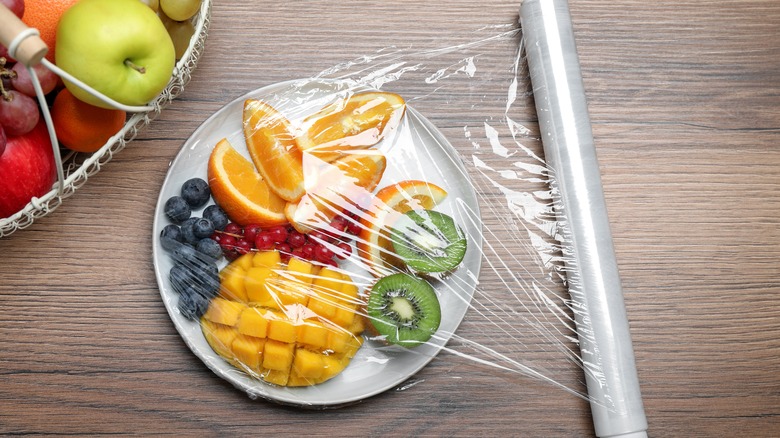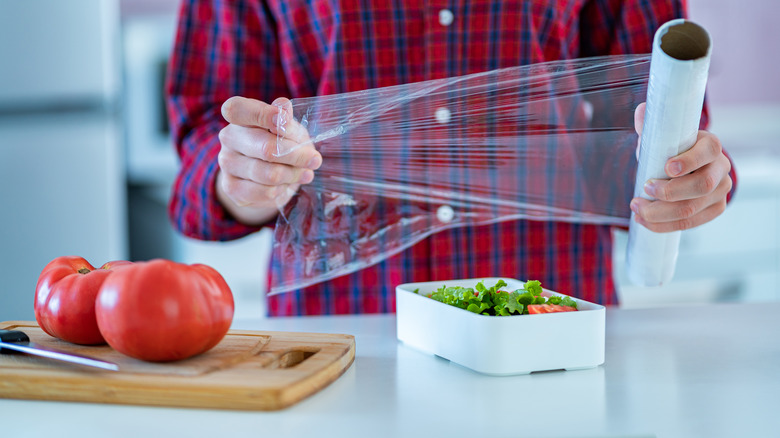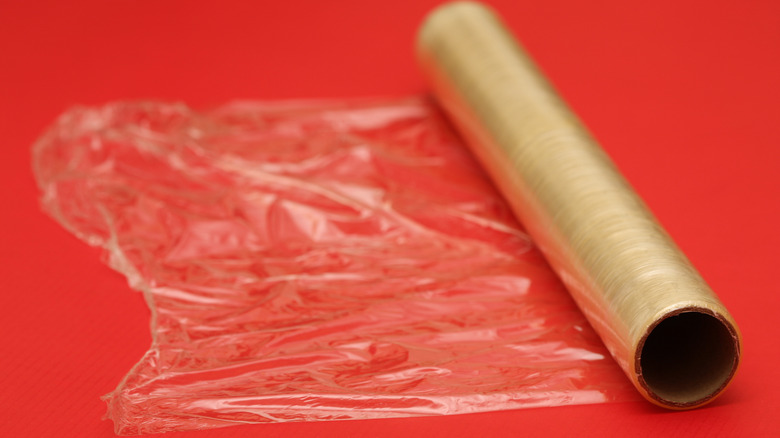Why You Should Be Storing Plastic Wrap In The Fridge
Plastic wrap is a key player when it comes to food prep, storage, and the general cooking process. However, it can also be pesky to handle. Sometimes, it seems almost impossible to cut off a usable piece of cling wrap, because it's doing its job so well that it won't stop clinging to itself.
If you're a frequent user of plastic wrap, you're likely familiar with this struggle. But imagine never having to fight with the film again. While tools like plastic wrap dispensers can help, there's a far more effective way to gain control of your plastic wrap: keep it cold.
Storing your plastic wrap in the fridge instead of in a drawer prevents it from sticking to itself, saving you from wasting crumpled sheets of plastic. It's a pro move, commonly used in restaurant kitchens, and a simple hack that can be easily adopted in your own kitchen.
Cold plastic wrap is better plastic wrap
You can store plastic wrap in either the fridge or freezer, as both locations are sufficiently cold enough to chill the material, making it easier to use. This is because plastic wrap is made with a material known as polyvinyl chloride (PVC), commonly found in many plastic products. When reduced to the thinness of plastic wrap, PVC generates static. This, coupled with the adhesives many brands add, can cause the film to stick to itself.
However, cold temperatures weaken the chemical bonds in the plastic, altering its molecular structure and decreasing the static and stickiness. Thus, chilled plastic wrap remains functional but becomes much easier to handle. Since plastic wrap quickly returns to room temperature once removed from the fridge, you have just enough time to ensure it adheres properly to the container before its static nature causes it to cling to itself.
Plastic wrap hacks you need in your life
While plastic wrap isn't a one-size-fits-all kitchen solution — for example, don't even think about storing your fresh bread in plastic — there are numerous innovative uses for it, both in and out of the kitchen, that can simplify your life.
For instance, many of us use a phone or tablet while cooking to follow a recipe or look up ingredients, only to find the device quickly becomes dirty and wet. Wrapping your phone in plastic film can keep it clean, and you'll still be able to use the touchscreen. This method also works well with cookbooks or other items in the kitchen that you want to protect from spills and splashes. Additionally, you can use plastic wrap to help prevent freezer burn on your ice cream by placing a sheet of it under a broken or misshapen lid.
Beyond the kitchen, plastic wrap can keep flowers fresh by wrapping a wet paper towel around the stems and sealing it with plastic wrap. It also helps to preserve paint cans, rollers, and brushes by preventing them from drying out. During packing, plastic wrap is invaluable for preventing small items like jewelry from getting lost and keeping toiletries from spilling.



